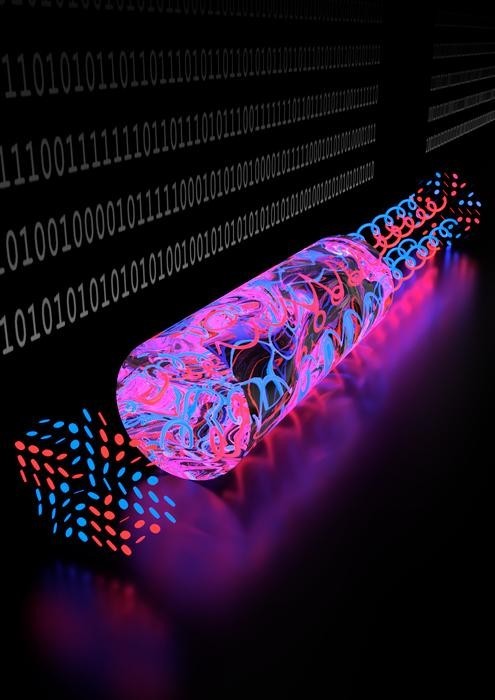South African researchers demo noise-free communication with structured light

A new approach to optical communication that can be deployed with conventional technology.
The patterns of light hold tremendous promise for a large encoding alphabet in optical communications, but progress is hindered by their susceptibilities to distortion, such as in atmospheric turbulence or bent optical fiber. Now researchers at the University of the Witwatersrand (Wits) have outlined a new optical communication protocol that exploits spatial patterns of light for multi-dimensional encoding in a manner that does not require the patterns to be recognized, thus overcoming the prior limitation of modal distortion in noisy channels. The result is a new encoding state-of-the-art of over 50 vectorial patterns of light sent virtually noise-free across a turbulent atmosphere, opening a new approach to high-bit-rate optical communication.
Published this week in Laser & Photonics Reviews, the Wits team from the Structured Light Laboratory in the Wits School of Physics used a new invariant property of vectorial light to encode information. This quantity, which the team calls “vectorness”, scales from 0 to 1 and remains unchanged when passing through a noisy channel. Unlike traditional amplitude modulation which is 0 or 1 (only a two-letter alphabet), the team used the invariance to partition the 0 to 1 vectorness range into more than 50 parts (0, 0.02, 0.04, and so on up to 1) for a 50-letter alphabet. Because the channel over which the information is sent does not distort the vectorness, both sender and received will always agree on the value, hence noise-free information transfer.
The critical hurdle that the team overcame is to use patterns of light in a manner that does not require them to be “recognized” so that the natural distortion of noisy channels can be ignored. Instead, the invariant quantity just “adds up” light in specialized measurements, revealing a quantity that doesn’t see distortion at all.
“This is a very exciting advance because we can finally exploit the many patterns of light as an encoding alphabet without worrying about how noisy the channel is,” says Professor Andrew Forbes, from the Wits School of Physics. “In fact, the only limit to how big the alphabet can be is how good the detectors are and not at all influenced by the noise of the channel.”
Lead author and Ph.D. candidate Keshaan Singh added: “To create and detect the vectorness modulation requires nothing more than conventional communications technology, allowing our modal (pattern) based protocol to be deployed immediately in real-world settings.”
The team has already started demonstrations in optical fiber and in fast links across free space and believes that the approach can work in other noisy channels, including underwater.

 How to resolve AdBlock issue?
How to resolve AdBlock issue?